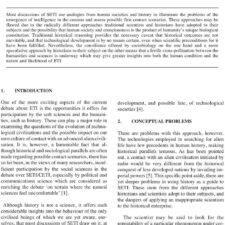Feasibility Study of a Three-Stage Radioisotope-Powered Mars Ascent Vehicle
£5.00
T. M. Chalpek; R. E. Allen; J. Y. Guan; S. S. Rao; S. D. Howe (2011), JBIS, 64, 38-42
Refcode: 2011.64.38
Abstract:
Recent advancements in methods of housing radioisotopes at the Centre for Space Nuclear Research have led to the concept of a radioisotope thermal rocket–a rocket powered by the accumulated heat of radioisotope decay. Heat energy from the decay can be accumulated over long periods of time in a material of high heat capacity to create a thermal capacitor. The capacitor can then be discharged at such a rate as to provide high power for short periods of time; in this case, the heat is transferred to a gas propellant. This paper explores the feasibility of using a radioisotope thermal rocket with in-situ atmospheric CO2 propellant to deliver a 10 kg payload from the Martian surface to a 200 km circular orbit about Mars. Models of heat transfer, gas dynamics, and ascent mechanics are constructed to test performance of different core materials and geometries. Of the configurations tested, the best simulation results fail to meet the altitude and velocity requirements by 12 km and 50 m/s respectively. The proximity to success indicates that the given models are capable of reaching orbital parameters if optimization algorithms and closed-loop guidance methods are employed. It is believed, however, that the current models underestimate expansion losses to the degree that if more realistic and computationally-intensive models are incorporated, the effect will definitively disprove the concept with currently available technology. Based on this preliminary research, radioisotope thermal rockets utilizing current technology are not capable of serving as Mars ascent vehicles.





